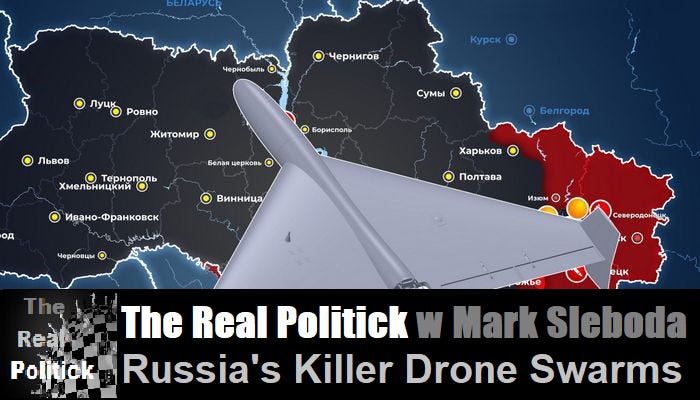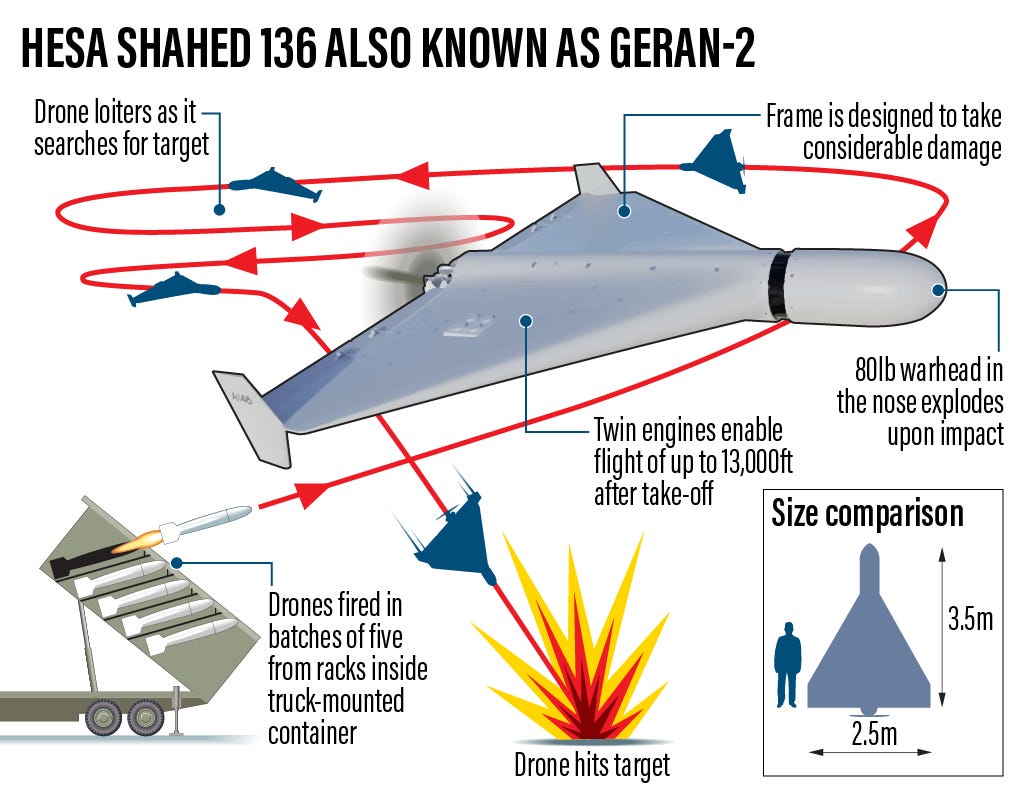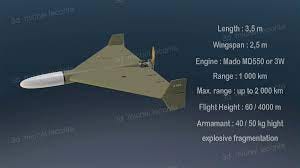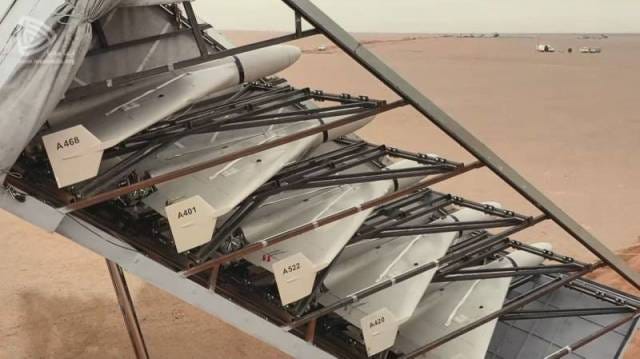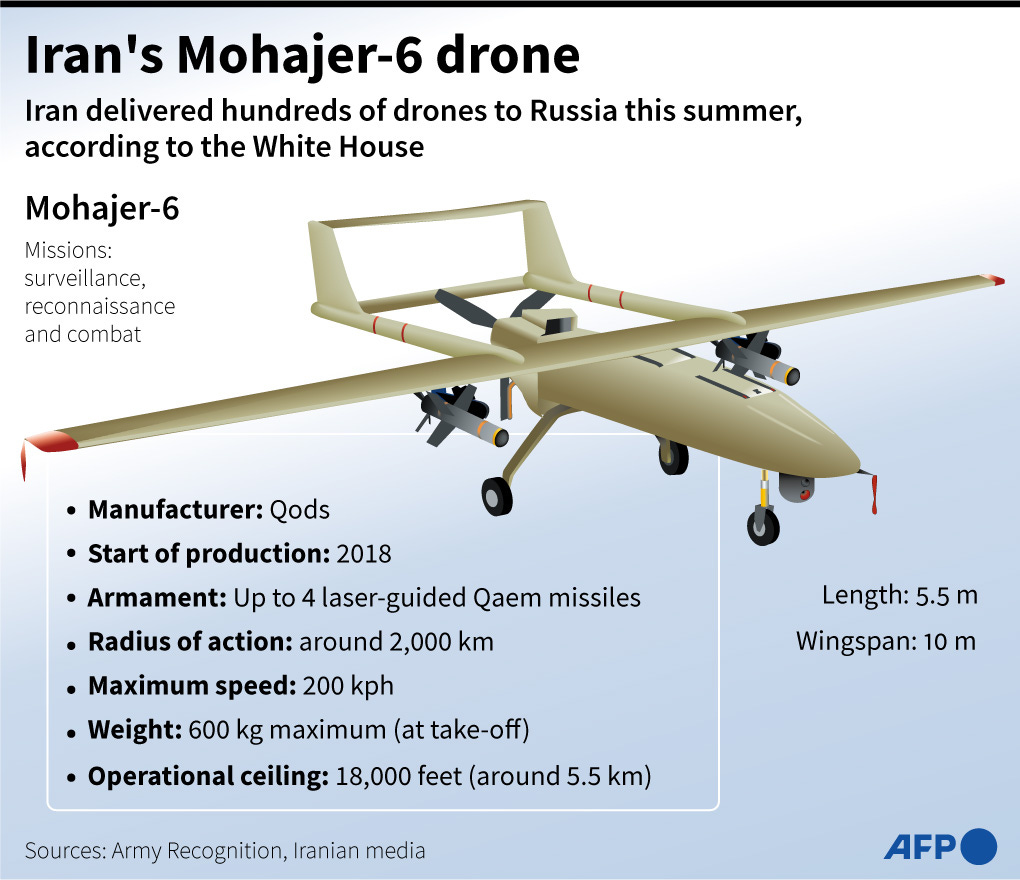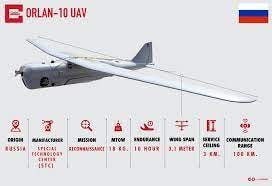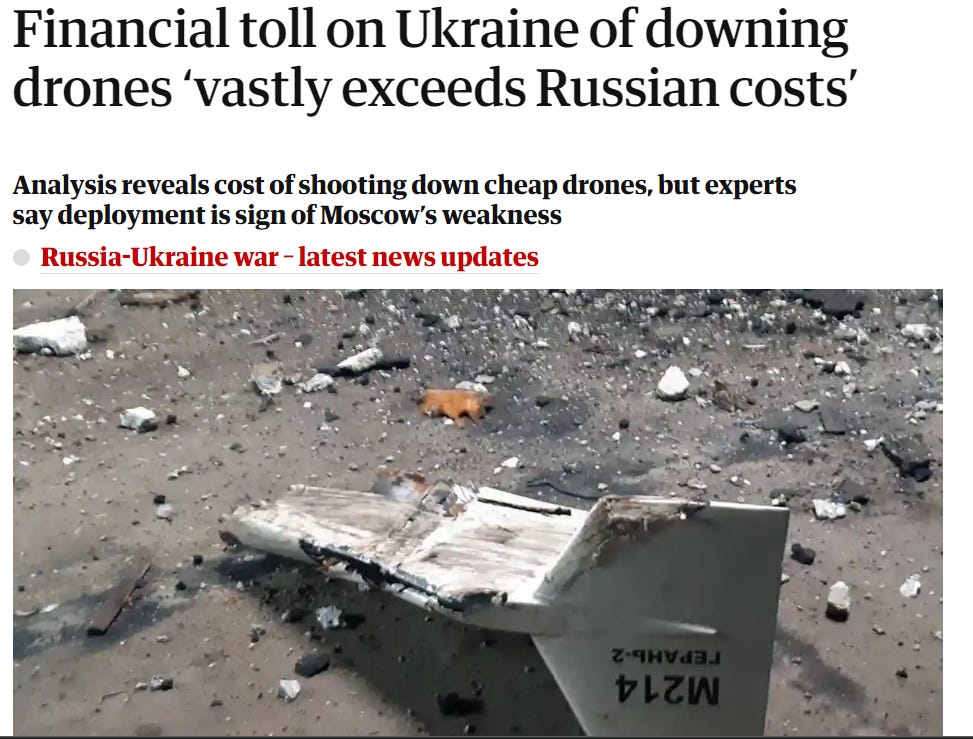The Geran-2, or Geranium, is a locally produced Russian loitering munition, or “suicide drone”, UAV (Autonomous Kill Vehicle) based on the Iranian Shahed 136. Loitering munitions are so named for their ability to hover and circle above an area until presented with a target.
The Geran-2 have been nicknamed “mopeds” or “lawnmowers” due to the distinctive loud noise their efficient engines make, or “doritos” due to their delta wing shape – as in “several hot doritos ordered and delivered to target”.
They first appeared on the Ukrainian battlefield in August and have already gained headline notoriety.
Reportedly, Iran has supplied the Russian military with the design and rights to produce their own - and mass production has already begun at several aviation factories in Russia, expected to ramp up to around 100 per day by the end of the year.
Reportedly the locally produced Geran-2 have their inertial guidance systems upgraded to use GLONASS control units, Russia’s own satellite navigation system analogue to GPS, to increase accuracy and prevent guidance signal tampering.
The Geran-2 can be fired in rapid succession in swarms from a mobile, truck-mounted launcher, making them difficult to find and counter. The loitering munition is also difficult to detect by radar, due to its small size, low flight altitude, and ability to change direction in flight and attack weak spots in air defense coverage. They are designed to evade air defenses and overwhelm ground targets, consuming air defense resources during the attack.
The operational range of the Geran-2 is up to 2000km, meaning any target anywhere in Ukraine can be hit even from safe locations in Crimea, Donbass, or Belarus. They carry a 50kg (or 110lb) warhead about equivalent to a 155mm artillery shell.
The Geran 2 is principally guided to target by satellite, making them most effective against static targets such as arms & ammunition depots, command & control centers, fuel storage, electrical infrastructure such as transformer substations, air defense systems, artillery positions and the like.
While the Geran-2 usually lacks a camera, other drones, such as the Iranian Mohajer-6 or Russia’s own Orlan-series UAVs accompanying as swarm leaders, or special forces units, can be used to scout and paint targets, allowing in-flight targeting updates and allowing the loitering munition to adjust mid-flight if the target repositions or to select new targets.
Perhaps these drones’ biggest advantage is their relatively dirt-cheap cost at less than $20k a pop, making them cheaper by factors than cruise missiles or air defense missiles that might be fired in attempts to shoot them down.
So - they are FAR more expensive to shoot down then they are to produce.
At that cost, they can be fired in swarms and though air defense might take some down, sheer numbers will always penetrate through to the target.
Let’s not use the overheated Western MSM term of “game changer” but the accuracy, lethality, low cost and mass-produce-ability of the Geran-2 make them an extremely useful addition to Russia’s existing drone & loitering munition arsenal for precision strike capability and SEAD suppression.
And there are rumors of more Iranian-designed drone and missile models soon to make an appearance with Russian forces on the Ukrainian battlefield in Season 2.
So, expect many many more hot dorito deliveries to the US-backed Kiev regime in the near future.




